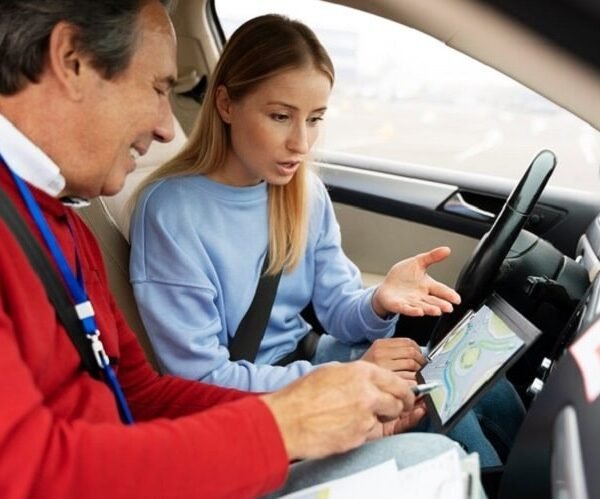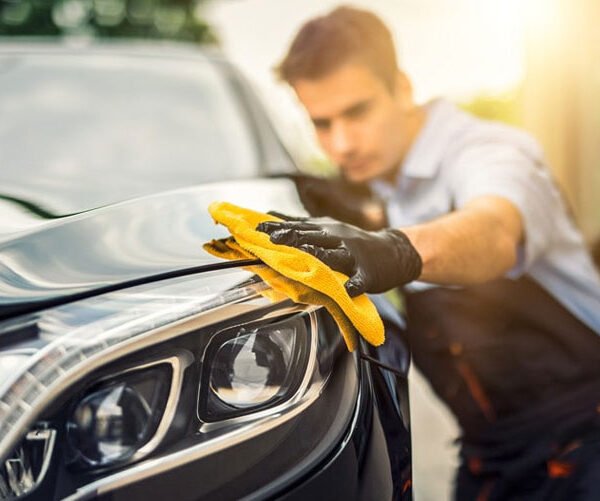How to Prepare Your Car for Winter
Are you ready to learn how to prepare your car for winter? Winter weather can bring harsh conditions like snow, ice, and freezing temperatures, making it crucial to winterize your car. Properly winterizing your vehicle can improve safety, prevent breakdowns, and save you money on costly repairs.
In this comprehensive guide, we’ll cover everything you need to know about getting your car winter-ready, from checking your tires to stocking an emergency kit. We’ll also share essential winter driving tips to help you stay safe on those slippery, snow-covered roads. So let’s dive right in!
Key Takeaways
- Inspect your tire tread depth and pressure, and consider switching to winter tires for better traction
- Check your car battery, antifreeze levels, and ensure your heater and defroster are functioning properly
- Assemble a winter emergency kit with essentials like blankets, a shovel, and jumper cables
- Practice winter driving safety techniques like slowing down, increasing following distance, and gentle braking
Winterizing Your Car: A Comprehensive Checklist
Here’s a step-by-step checklist to help you prepare your car for winter weather conditions:
- Checking your car’s battery
- Testing the battery’s health is crucial because cold weather can drain a weak battery faster. Consider getting a free battery test at an auto parts store or service center.
- If your battery is nearing the end of its lifespan (typically 3-5 years), it’s wise to replace it before winter hits to avoid getting stranded with a dead battery.
- Inspecting your tires
- Proper tire tread depth and pressure are essential for maintaining traction on snowy and icy roads. Here’s what to do:
- Check your tire tread depth using a tread depth gauge or the penny test (insert a penny upside down into the tread grooves; if you can see all of Lincoln’s head, it’s time for new tires)
- Check your tire pressure and fill your tires to the recommended PSI level (found in your vehicle owner’s manual or on the driver’s side doorjamb)
- Consider investing in a set of dedicated winter tires or all-season tires with the winter tire symbol for optimal traction. Winter tires are made of a softer rubber compound that stays flexible in cold temperatures, providing better grip on snow and ice.
- Proper tire tread depth and pressure are essential for maintaining traction on snowy and icy roads. Here’s what to do:
- Changing oil and antifreeze
- Use a winter-grade, multi-viscosity oil (like 5W-30) to ensure your engine stays properly lubricated in the cold.
- Check your coolant level and add a 50/50 mixture of antifreeze and water if needed to prevent your engine from freezing up.
- Fixing your heater and defroster
- Ensure your heating system is working correctly before winter arrives. A malfunctioning heater can make for an uncomfortable and potentially dangerous driving experience.
- Test your defroster to make sure it clears your windshield effectively. Poor visibility due to a faulty defroster increases your risk of an accident.
- Inspecting your battery
- Check that your battery connections are tight and corrosion-free. Clean any corrosion buildup using a wire brush and baking soda solution.
- If your battery is more than 3 years old, consider having it tested or replaced to avoid getting stranded in the cold.
- Assessing exterior lights
- Check all of your exterior lights (headlights, taillights, brake lights, turn signals) to ensure they’re clean, functioning properly, and correctly aligned.
- Replace any burnt-out bulbs to improve visibility and safety.
- Cleaning the interior
- Give your car’s interior a thorough cleaning to remove any lingering dirt, stains, and odors before winter.
- Use rubber floor mats to protect your carpeting from salt, snow, and mud tracked in from your shoes.
- Protecting against moisture buildup
- Use moisture-absorbing products like silica gel packs or a dehumidifier to prevent mold growth and musty odors inside your car.
- Wipe down all interior surfaces to eliminate condensation buildup, which can lead to water stains and deterioration of upholstery.
- Caring for leather and upholstery
- Apply a quality leather conditioner to prevent your leather seats and trim from drying out and cracking in the cold, dry winter air.
- Use an upholstery cleaner and protector to keep your cloth seats looking fresh and guarded against stains.
Winter Car Preparation Checklist |
|---|
| 1. Check battery health and connections |
| 2. Inspect tires for proper tread depth and pressure; consider winter tires |
| 3. Change to winter-grade oil and top up antifreeze |
| 4. Ensure heater and defroster are functioning properly |
| 5. Clean and replace exterior lights as needed |
| 6. Clean interior and protect from moisture buildup |
| 7. Condition leather and protect upholstery |
Following this comprehensive checklist will help ensure your car is ready to tackle winter’s harshest conditions while keeping you safe and comfortable on the road.
Winter Driving Safety Tips
Even with a well-prepared car, driving in winter weather requires extra caution and care. Here are some essential winter driving tips:
- Account for extra travel time, as snow, ice, and traffic will likely slow you down.
- Before driving, thoroughly remove any snow or ice from your entire vehicle, including the roof, windows, mirrors, and lights. Loose snow can blow onto your windshield, obstructing visibility.
- Drive slower than usual – around 10 mph under the posted speed limit is a good rule of thumb when roads are slippery. This gives you more time to react if your car starts to slide.
- Accelerate and decelerate slowly to maintain traction and avoid spinning your wheels or skidding.
- Always wear your seatbelt – it reduces your risk of injury in a crash by about 45%.
- Never use cruise control on slippery roads, as you want complete control over acceleration.
- Increase your following distance to at least 8-10 seconds behind the car in front of you. This gives you more room to brake gradually.
- If you start to slide, take your foot off the gas and steer in the direction you want the front of the car to go. Avoid slamming on the brakes.
- Use winter tires with deeper, more flexible tread patterns for improved grip on snow and ice.
- Practice gentle braking by applying constant, firm pressure if you have anti-lock brakes (ABS). If your vehicle doesn’t have ABS, pump the brakes gently to avoid locking up the wheels.
Preparing an Emergency Kit
Despite your best efforts, you may find yourself stranded in winter weather due to a breakdown, accident, or impassable roads. That’s why it’s crucial to assemble a winter car emergency kit and keep it in an accessible place like your trunk. A well-stocked kit can be a lifesaver! Here are the essential items to include:
- Blankets or sleeping bags to stay warm if stuck for an extended period
- A flashlight with extra batteries
- First-aid kit
- Non-perishable snacks and bottled water
- Sand, cat litter, or traction mats to help get unstuck from snow or ice
- Jumper cables to get your battery started
- Ice scraper and brush to clear snow from your windshield
- Reflective triangles or road flares to increase visibility for other drivers
- A small shovel to dig out snow around your tires
- Extra warm clothing like hats, gloves, boots and blankets
- Basic tools like a wrench, pliers, and screwdrivers
Having these items packed and ready can provide peace of mind and potentially save your life if stranded in freezing temperatures.
Conclusion
Prepping your car for winter driving is an essential step that shouldn’t be overlooked. By following the comprehensive checklist and tips we’ve outlined, you can improve safety, avoid preventable breakdowns, and maybe even save some money on costly tow truck calls and repairs.
Remember, a little time invested in winterizing your vehicle can make a significant difference in your winter driving experience. So don’t wait until the first snowflake falls – start checking items off this list now to stay ahead of winter’s wrath. Your future self will thank you when navigating those slippery, icy roads with confidence!
And if the winter weather ever takes a turn for the worse, you’ll be glad you assembled that trusty emergency kit. Stay safe out there, and enjoy the winter wonderland from the warmth and safety of your well-prepared car!











